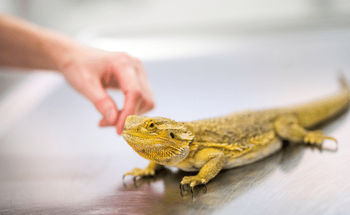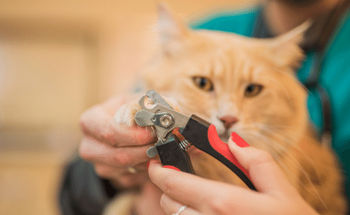Welcome to Buckles Feed Depot & Pet Supply!
Buckles Feed Depot & Pet Supply is a small family-owned business that has been around since 1977. In that 39-year span Buckles Feed has been transformed from a simple feed store to a full-service feed & pet supply which includes pets and all the accessories. Customer demand has pushed most of the emphasis on premium foods that serve health-related purposes. Our food selection is based on the idea that your pet should eat to improve their wellness as opposed to eating merely to exist. Buckles Feed Depot & Pet Supply will continue to evolve and with your support perhaps we can serve you for another 40 years.

Adoptable Pets
We have the most comprehensive assortment of small animals, birds & reptiles in the area.

Nail Trimming for Any Animal
Nail trimmings can be scary - let our professionals take care of this for you
ASK US ABOUT A BALANCED NUTRITION PLAN
Customer demand has pushed most of the emphasis to premium foods that serve health-related purposes. Our food selection is based on the idea that your pet should eat to improve their wellness as opposed to eating merely to exist.
Buckles Feed Depot & Pet Supply IS ON INSTAGRAM
Follow Buckles Feed Depot & Pet Supply on Instagram for great photos of our locally-owned pet supply & feed store,
newly adoptable pets, deals on supplies, upcoming events & more!
WHAT Lafayette CUSTOMERS ARE SAYING
We love our customers from Lafayette areas around Downtown Lafayette, Delphi, Crawfordsville, West Lafayette, Shadeland, Monticello, Dayton, Wyandot & More!
When I usually go here to get dog food I’ve never been asked if they could carry the big bag out for me. But the cashier Jake offered and I appreciated it cuz I’ve had 4 back surgeries. Good customer service!
When I usually go here to get dog food I’ve never been asked if they could carry the big bag out for... Show More
When I usually go here to get dog food I’ve never been asked if they could carry the big bag out for me. But the cashier Jake offered and I appreciated it cuz I’ve had 4 back surgeries. Good customer service! Show Less
I’ve been wanting to come see this place for awhile yesterday I finally went. Everyone was so friendly and eager to help. The store was phenomenal great quality live feeder I was so impressed this place is incredible.
I’ve been wanting to come see this place for awhile yesterday I finally went. Everyone was so friend... Show More
I’ve been wanting to come see this place for awhile yesterday I finally went. Everyone was so friendly and eager to help. The store was phenomenal great quality live feeder I was so impressed this place is incredible. Show Less









.png)




.png)


.png)




